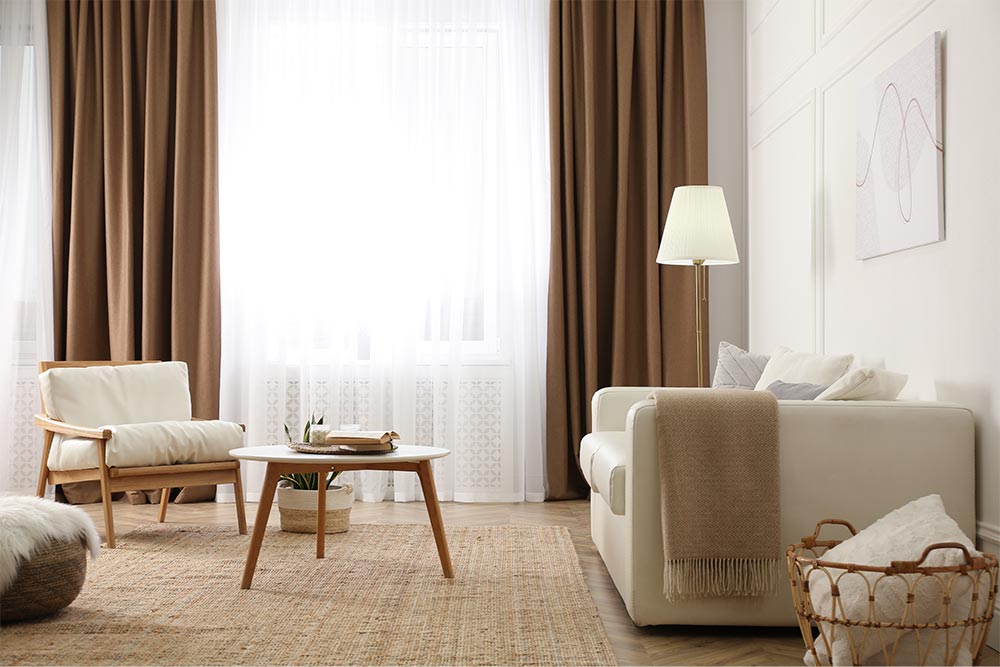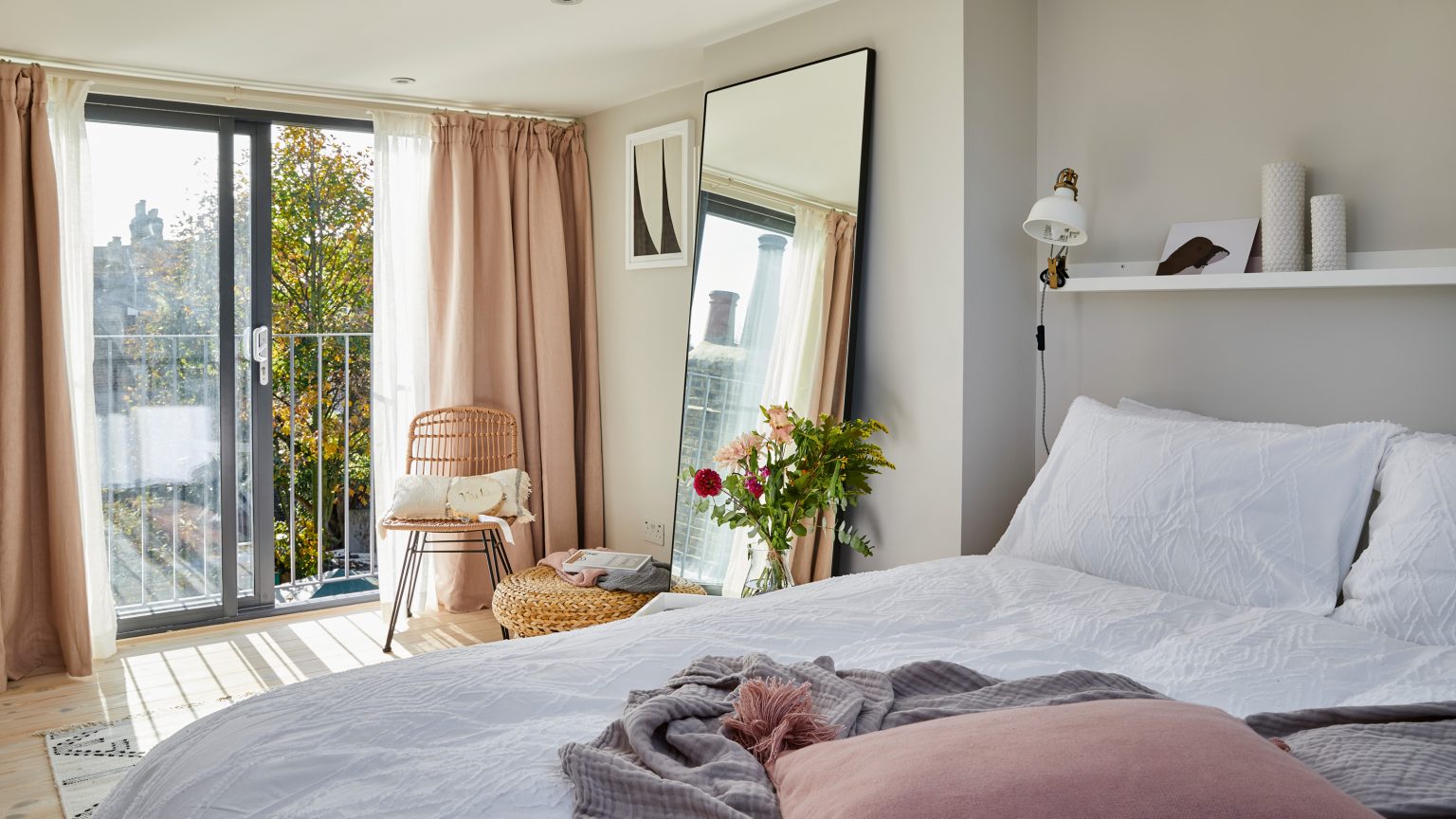Curtains are best in rooms and areas of the home where you want to create a feeling of warmth and coziness such as living rooms and bedrooms. A thick, lined fabric curtain is the window furnishing of choice for areas you would like to insulate in winter. For a summery feel across a patio door, choose a lightweight or sheer fabric. Wherever you’d like to express your style through color and pattern in your home, curtains can help. However, they are less practical in rooms that get a lot of moisture, such as kitchens, bathrooms, and laundries. Keep reading for more useful information on how to best use curtains around the home.
Width-Length-Color
1-Curtain width
The ideal width of your curtains for windows and doors depends on the width of the molding of your window pane or door. One way to arrive at the ideal width is to measure the frame and multiply it by a factor of 2/2.5. The extra fabric helps accomplish the gathered look on the sides when the curtains are drawn back.
2-Curtain Length
Curtains that fall exactly to the floor are in vogue. For a more dramatic look, you can opt for a curtain size that is longer by a few inches, so that the drapes puddle on the floor. On the other hand, if you have kids, you are better off with curtains a couple of inches above the floor. Ending curtains for windows at the sill is yet another classic option, but full-length drapes could work equally well.
3-Curtain Color
The color of your curtain designs for windows and doors should ideally be in sync with the rest of the furnishings. You could either choose drapes for windows that harmonies with the decor or suitably contrast with it. You can opt for a pleasing look by going for drapes in a color that complements the shade of your walls. Alternatively, if you want the curtain design to be the focus, pick a hue that contrasts with the furniture and walls.
Related article: Chandeliers & Designer Lighting

Using curtains to make a room look bigger or smaller
- Hang them high on the wall, right up near the ceiling, and right down to the ground. This draws the eye upwards creating an illusion of height.
- Stripes can fool the eye. For small rooms with low ceilings choose vertical stripes to add height. While horizontal stripes will visually shorten wide walls and high ceilings.
- Choose a fabric in a slightly lighter shade of the wall color to open up a small room; use darker colored curtains to make a larger space cozier.
- Long, solid curtain rods can create an impression of spaciousness. With them, you can pull the curtains clear of the window exposing its full width to make it appear larger and let in more light.
- This will also protect the fabric from sun fade.
Bedroom Curtains
When choosing bedroom curtains, start with the material. Typically, it’s not uncommon to find heavier fabrics used for bedroom curtains as they tend to block out light and noise better than lighter fabrics so that you can get a better night’s sleep.
Which material for bedroom curtains
Cotton: cotton is the most common option. Cotton is light, breathable, and easy to care for.
Silk: If you’re aiming for a luxurious vibe, consider a heavier, more sumptuous fabric like silk. Silk lets light through for an airy, luxurious appearance.
Velvet: One of the most elevated ideas for bedroom curtains is velvet. Velvet is heavy and excellent for insulating your windows from cold drafts and hot summer days.
Polyester: If you’re looking for a fabric that’s as easy on your pocket as it is to care for, go for polyester. Polyester is budget-friendly, low-maintenance, and great for first-time homebuyers.
Linen: Linen curtains enhance a room’s aesthetic while diffusing the sun’s rays and providing privacy. They drape beautifully, adding charm and warmth to a modern, rustic, natural and coastal space or aesthetic. Linen curtains are easy to care for and maintain, are machine washable or dry cleanable.

Which styles for bedroom curtains
There are a number different curtain types to choose from. Each has a different feel, sometimes leaning more casual while other times feeling more formal.
Pinch pleats: This style offers traditional taste to complement formal spaces. Pinch pleats are sewn together about three inches down from the top of the drape and create an x-shape at the pinch before gradually widening out.
Gather: This header style is a standard gather that has undefined pleats along the top of the curtain. It’s a more informal look, and it’s great for smaller windows.
Grommets: This header features metal rings attached to the top of the fabric that the rod is then inserted into.
Swags: Swags are a purely decorative type of curtain. They drape beautifully over a curtain rod or are hung loosely on either side of the window frame.
Box pleats drapery: the pleats are on the back side of the drapery. A structured, columnar look appears in the front view. It creates a sleek look and feel that’s still casual.

